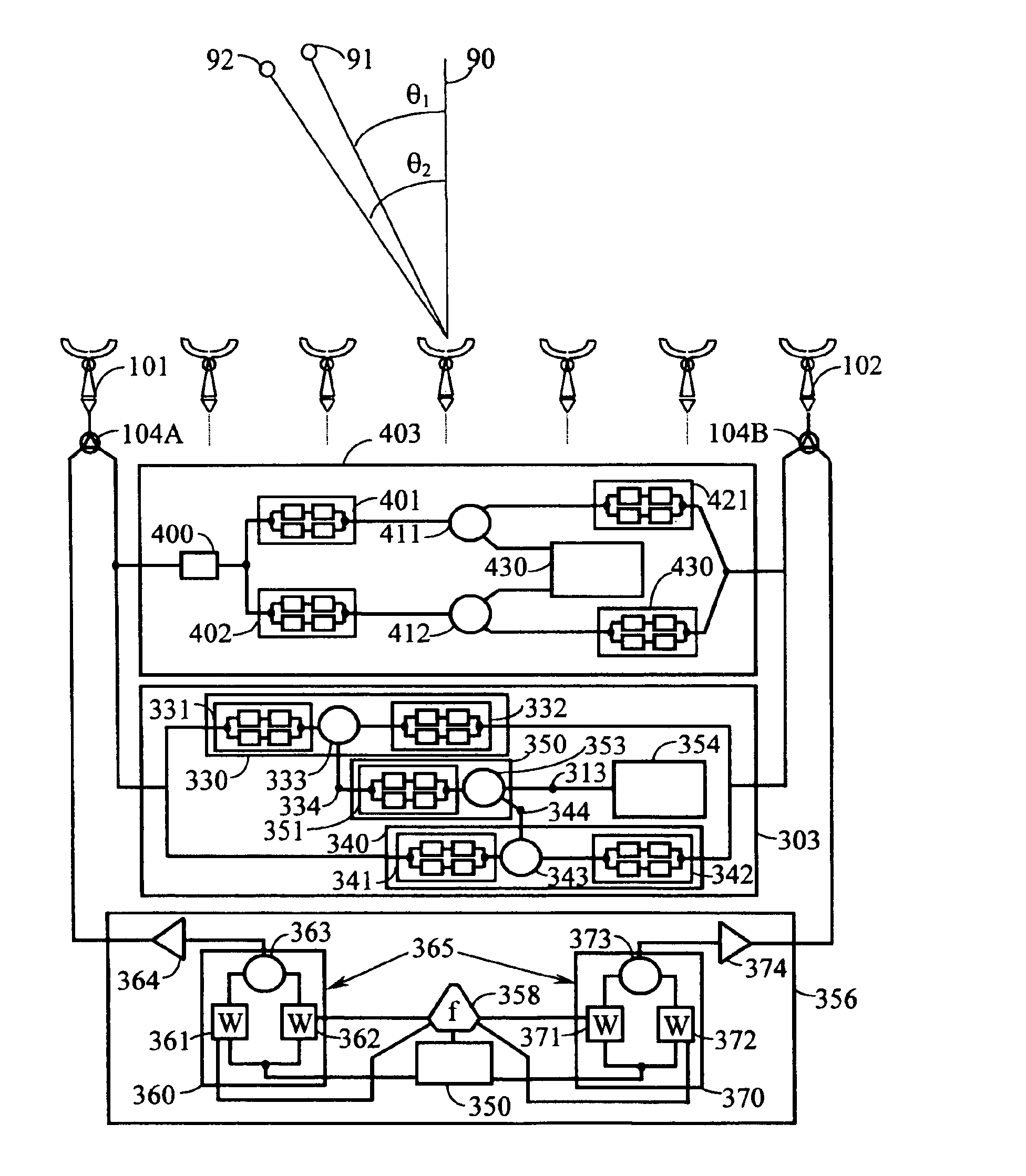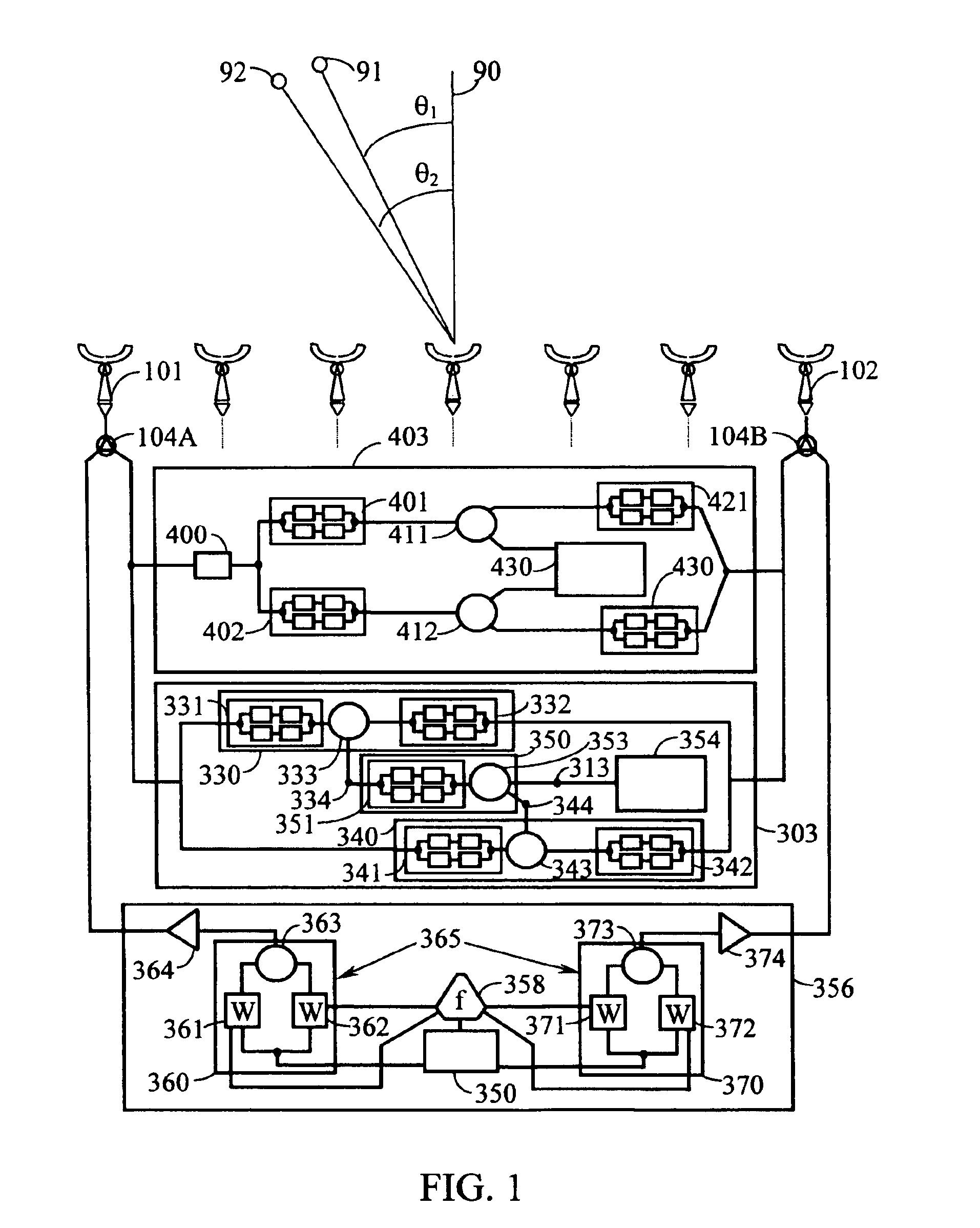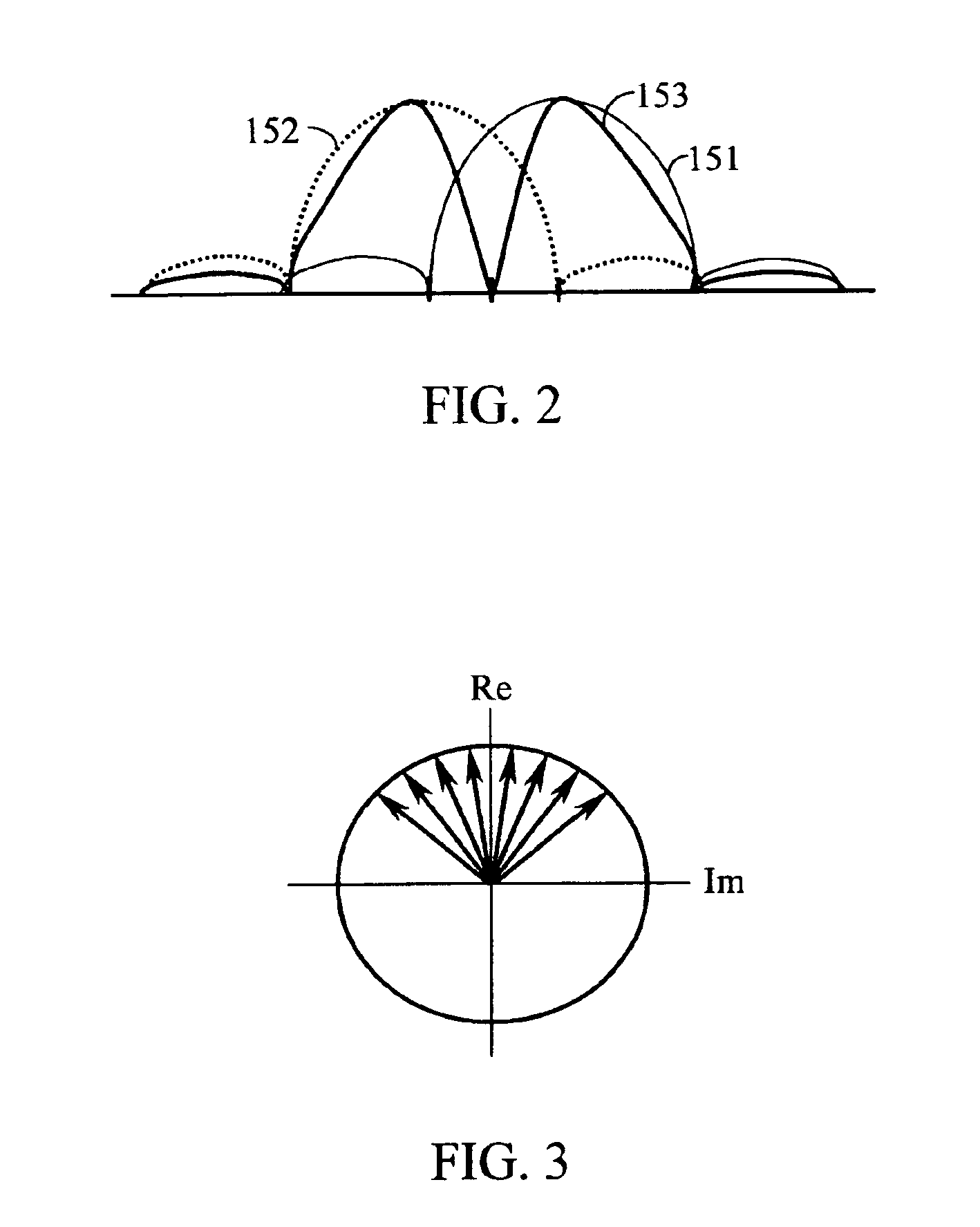Cancellation system for frequency reuse in microwave communications
a frequency reuse and cancellation system technology, applied in the field of isolation systems, can solve the problems of limited data transmission capacity, limited access to wireless services, co-channel interference, etc., and achieve the effect of better than fifty percent transmit efficiency to the antenna
- Summary
- Abstract
- Description
- Claims
- Application Information
AI Technical Summary
Benefits of technology
Problems solved by technology
Method used
Image
Examples
Embodiment Construction
[0029]FIG. 1 shows part of an antenna array 100 of the present invention comprising a first antenna 101 and a second antenna 102 coupled to an interferometric beam-narrowing processor 303. The first antenna 101 is coupled to the processor 303 by a first three-port device 104A, and the second antenna 102 is coupled to the processor 303 by a second three-port device 104B. The processor 303 has a receiver output 313. Although only two elements 101 and 102 are shown in this array 100, the principles regarding the operation of this antenna array 100 may be extended to more than two antennas.
[0030]A first distant radio-frequency source 91 is spatially separated from a second distant radio-frequency source 92. In this case, both sources 91 and 92 radiate at a common wavelength .lambda.; however, these sources may radiate at different wavelengths. Radiation from the first source 91 is shown as a plane wave 119 representing a common phase-front incident at the antennas 101 and 102 at a first...
PUM
 Login to View More
Login to View More Abstract
Description
Claims
Application Information
 Login to View More
Login to View More - R&D
- Intellectual Property
- Life Sciences
- Materials
- Tech Scout
- Unparalleled Data Quality
- Higher Quality Content
- 60% Fewer Hallucinations
Browse by: Latest US Patents, China's latest patents, Technical Efficacy Thesaurus, Application Domain, Technology Topic, Popular Technical Reports.
© 2025 PatSnap. All rights reserved.Legal|Privacy policy|Modern Slavery Act Transparency Statement|Sitemap|About US| Contact US: help@patsnap.com



